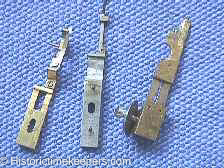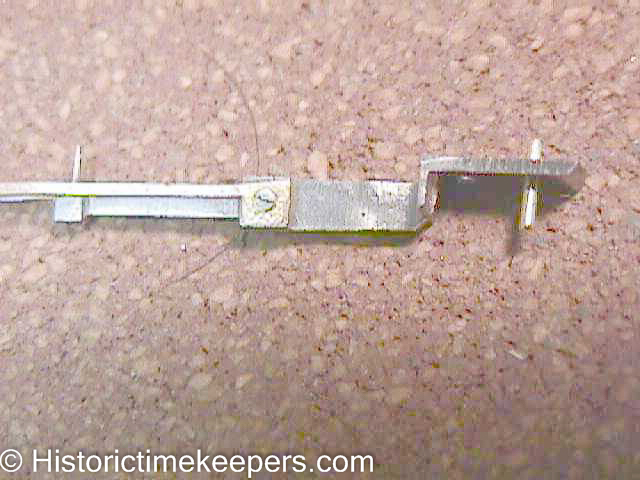Here
are some examples of repairs that actually decrease the value or
historical importance of a timepiece. Some of these were done by
those who simply did not know any better, others by people trying to
"get the thing to tick" so that they could sell the timepiece. The
fascinating examples are those repairs that were made by people who obviously possessed innate talent and mechanical gifts. These are the ones that
show considerable effort; but were misguided in that the proper approach
would have required less effort. While such efforts cause me to
shake my head in wonder, most collectors do not appreciate these modifications
to the original workmanship and character of the piece. Perhaps
the most annoying "botches" involve chronometer detents.
The motivation is simple, to make a damaged expensive instrument tick
for next to nothing. Never mind that it is no longer a
chronometer, that its rate stability has been destroyed. It ticks
and can be sold to an unsuspecting buyer for full retail. Chronometer
escapement detents cannot be "repaired". There simply is
no alternative but to make a replacement detent. I consider this
annoying because it almost always involves an unsuspecting novice
collector who finds out about the fraud only when they the instrument in
for service. Here is a sample of "repaired"
detents I have removed from chronometers.  Two
of these recently came out of Hamilton M21 chronometers. compare
these to the Replacement Detents. Two
of these recently came out of Hamilton M21 chronometers. compare
these to the Replacement Detents.
The
detent below is the kind of "repair" I see a lot. Having
broken the spring off at the foot, the would be repairman slit the foot
and "let in" a spring and arm he filed up. Sometimes it
is the original spring used (albeit shorter). In this example, the
new part was not even hardened and tempered, so there is absolutely no
"spring". At any rate, the spring is always soldered in
and its properties destroyed by the heat. 
 Another
sign of questionable workmanship is heat marks on parts. If you double
click on the image, you will see two things. The first is that the
workman did not bother to refinish the pinion after heat reduced the
temper. The second thin you will notice is that the top pivot (to
the right) is tapered rather than straight. This will severely
impact on the chronometer's stability of rate. Another
sign of questionable workmanship is heat marks on parts. If you double
click on the image, you will see two things. The first is that the
workman did not bother to refinish the pinion after heat reduced the
temper. The second thin you will notice is that the top pivot (to
the right) is tapered rather than straight. This will severely
impact on the chronometer's stability of rate.
|